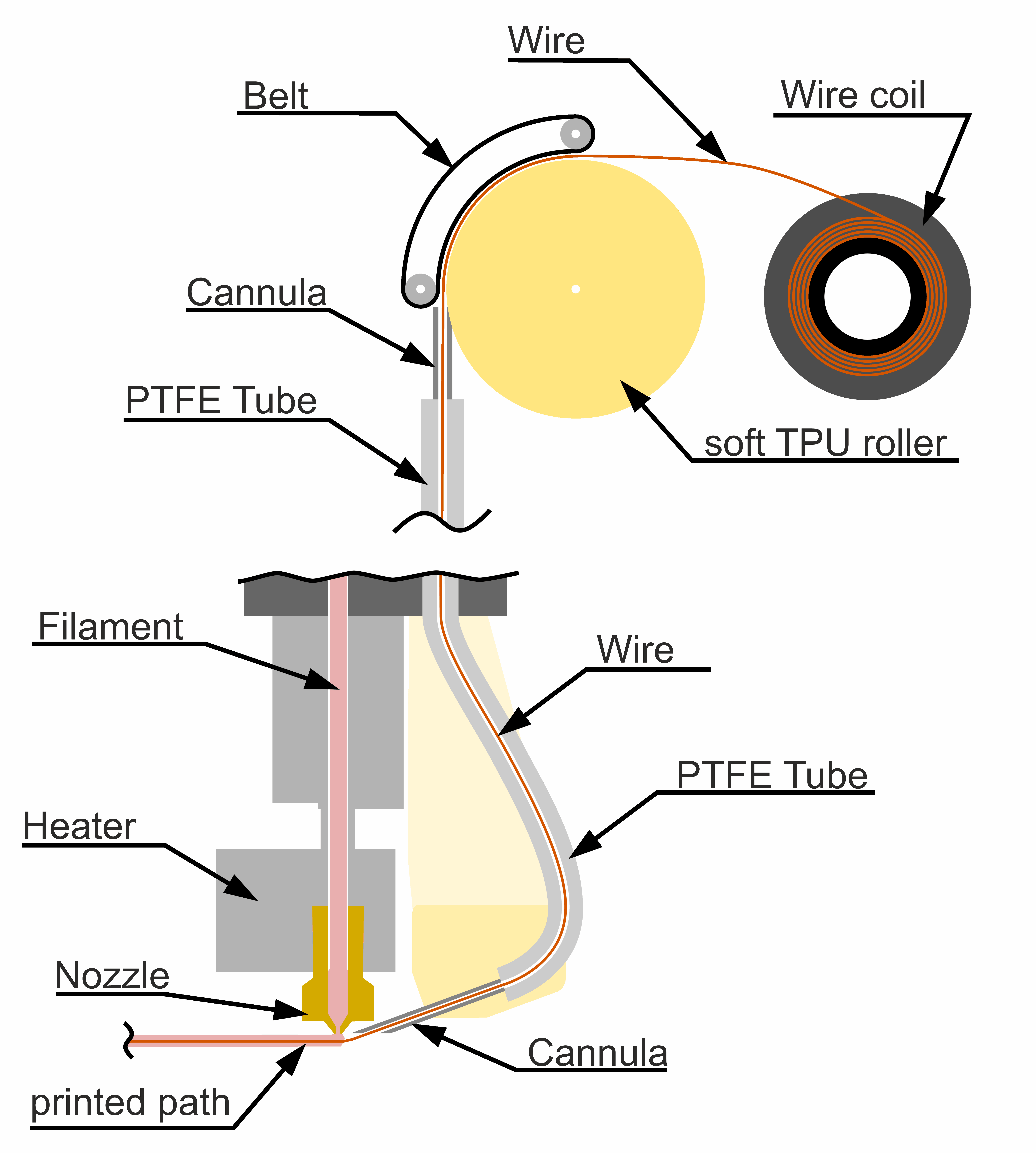Challenges / research priorities
Due to the high flexibility of the technology and the great demand for automated electronics, there are fields of application ranging from microelectronics and sensor technology to power electronics in vehicles. The variance in application requirements, the very high demands on the electrical functions, the component geometries and substrates require a high degree of process control and adaptation to changing environmental conditions.
For continuous optimization, the research and development goals are divided into
- Feature sizes and dimensions of the machinable components
- Processing of wires Ø<0.1 mm for the connection of microelectronic components in assemblies <5cm
- Processing of wires Ø>1 mm for power cables with corresponding connection contacts in assemblies >1m
- Material selection of wire, sheath and substrate
- Optimum substrate/polymer combinations and process parameters for all application requirements
- Cost-effective copper / aluminum conductor wires for long cable runs
- Rectangular wires for high conductor densities
- Duromer conductor sheaths for high-temperature applications
- Textile substrates for skin-friendly wearable systems
- Process speed and automation
- Development of directional nozzles for optimum material flow
- Connection to various motion systems
- Standardization of control and process planning
- Increase in deposition speeds >200 mm/s
- Process quality
- Targeted wire position within the polymer web
- Defined, complex outer and cross-sectional geometries of the polymer
 Fraunhofer Institute for Machine Tools and Forming Technology
Fraunhofer Institute for Machine Tools and Forming Technology